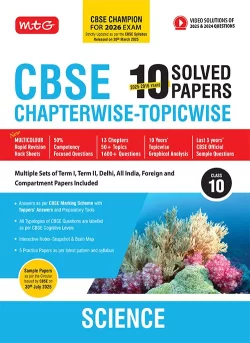MTG’s “Lab Manual” for CBSE Students is a comprehensive handbook following the latest CBSE 2024 syllabus, is designed to assist students in their practical exams. This guide covers a wide range of topics with which students can enhance their practical skills and confidently tackle their CBSE practical exams.
- Lab Experiments to provide hands-on experience and practical application of theoretical concepts.
- Viva-Voce Questions will help remove any surprise & fear regarding the actual viva.
- NCERT Lab Manual Questions helps in familiarizing with the format and type of questions asked.
- Multiple Choice Questions to cover wide-ranging topics.


 Free delivery in India for orders over Rs. 1,100.00.
Free delivery in India for orders over Rs. 1,100.00.

























